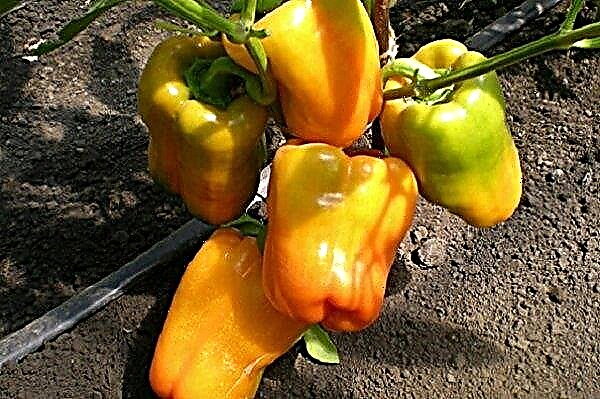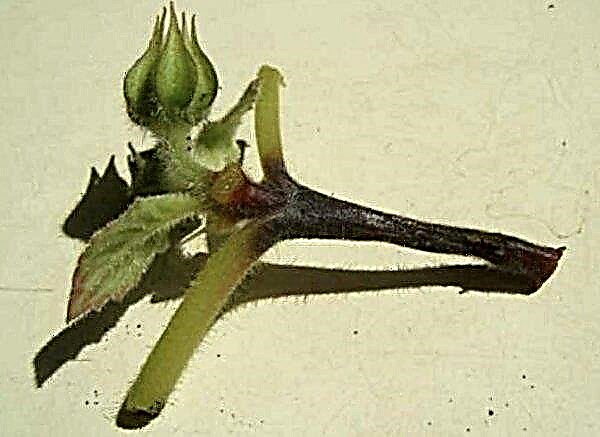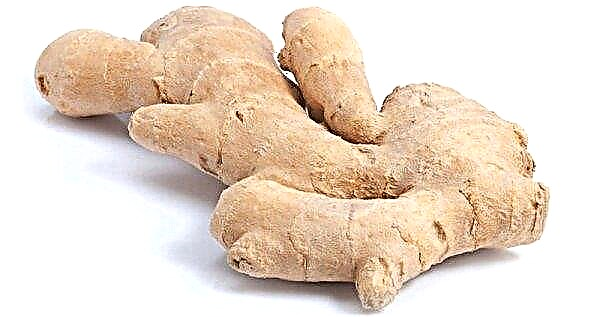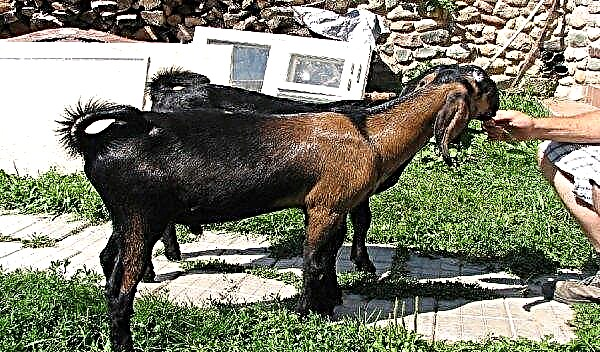Many saw on the premises a beautiful croton bush with bright colorful leaves, but not everyone knows its name and, especially, what care does this plant require. We offer to get acquainted with croton closer and find out the subtleties of its cultivation, reproduction and maintenance.
Description of the types of croton
Today at home it is customary to grow unpretentious species.
We list the names of the most striking varieties of these colors:
- Laxative. The advantage is the presence of croton oil, which is extracted from the seeds of the plant. Oil has a laxative effect.
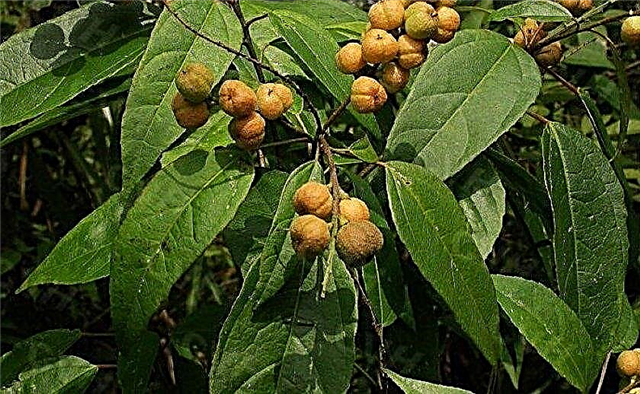
- Cascaril (eluater). It is a small tree on which white flowers bloom, exuding a pleasant aroma. A similar smell comes from the bark. Thanks to this, the plant is used in various fields of activity, for example, in medicine.
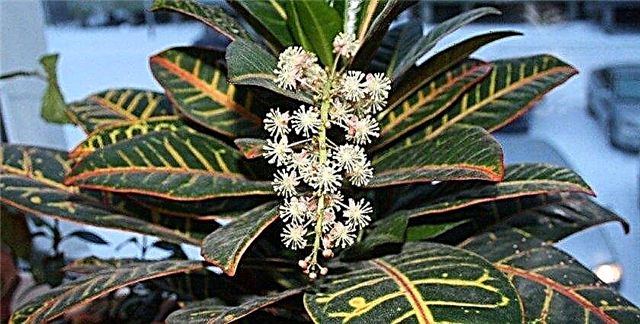
- Dragon. The name is due to the fact that in the leaves and trunk there is a resin of red color, which is similar to blood. Used for the production of varnishes. In addition, croton helps with fractures, pain and strengthens the immune system.

- Prickly. The flower is similar to the previous one not only externally, but also by the scope.

Home Care
Croton care is no different from other plants. Let's consider what microclimate standards are suitable for it.
Location and conditions
For development and growth, the plant must provide the following conditions:
- Temperature. Stable, + 18 ... + 26 ° С throughout the year.
- Lighting. Direct sunlight is contraindicated, since in this case the plant will lose its main advantage - the original color of the leaves. The best place to place is the east or west window, where there is a lot of light, but it is scattered. Lack of sunshine also negatively affects colors.
- Humidity. Not lower than 75%. To achieve this, it is recommended to spray the foliage. The pot is placed on a stand with wet stones or wet moss.
Did you know? Croton leaves and stems contain milky juice, which has the property of healing wounds and injuries, which allows the plant to heal itself.
How to water and fertilize?
Croton needs regular watering with a small amount of water. It is important to ensure that the soil is always moist, but the water does not stagnate and the roots do not sour. Water should be settled at room temperature. It is recommended to spray the foliage.
The flower is fed with a solution based on a complex mineral fertilizer. Contribute twice a month from April to November. In the cold season, the amount is reduced to 1 time.

Transfer
Young plants are recommended to be replanted every 2 years. Adults transplant as the pot is filled with roots. Gradually, the gap is increased to 4 years. In the absence of such manipulations, the stem is exposed and the foliage is chopped, which directly affects the attractiveness of the flower. The best time to transplant is the beginning of spring. In order not to damage the roots, it is better to transship.
Important! Croton juice is toxic. When working with the plant, wear gloves. In addition, protect children and animals from contact with it.
For transplantation, choose a pot with a large volume and width. Drainage is poured into the bottom.
The soil should consist of the following parts:
- sheet mixture - 2;
- sand - 1;
- turf land - 1.
Video: croton transplant at home
Pruning
Pruning is carried out for a plant that has grown up above 40 cm. This is done to form lateral branches and create an attractive form of a bush with evenly growing leaves. You can carry out manipulations at any time, however, for development in full force it is better to choose spring. The slice is made with a sharp knife, removing about 15 cm of the tip. At the end, the section is sprinkled with wood ash, which will provide disinfection.
Did you know? Despite the fact that the juice of croton laxative is used in medicine, the amount of more than 20 drops is fatal to humans.
Breeding
Croton is propagated by seeds, cuttings, as well as air bends. Consider the methods in more detail.
Seeds
The longest way, requiring time and effort. Seeds are planted at the beginning of winter. Before germination, it is recommended to disinfect and soak them in a growth stimulator. To get rid of bacteria, the seeds are placed in boiling water for 30 minutes, and then for the formation of roots - for a day in a solution with the addition of a growth activator. At the end of time, the seeds are laid on the surface of the prepared soil and gently pressed deep into. The surface is moistened and covered with a film, creating a greenhouse effect.
Under suitable conditions, the seeds germinate after about a month. After emergence, the film is removed for a while, allowing the plants to get used to the room air. After the appearance of 3 full leaves, new flowers are transplanted into separate pots.
Important! To cuttings rooted for sure, they are cut only from lignified healthy shoots.
Apical cuttings
More often, the flower is propagated in this way. Manipulations are carried out in the spring. To do this, cuttings with a size of 15 cm are cut from the base of the stem. Then it is lowered into water to remove milky juice, then dried. To evaporate moisture, it is recommended to tie the leaves of the plant into a tube. At the end, the stalk is dipped in warm water. The top is covered with polyethylene, and the pot itself is placed in a warm place for about 30 days. During this time, roots appear. After reaching a root length of more than 2 cm, the plant is planted in the soil.
Video: croton propagation by cuttings
Air outlets
The presence of an adult croton with a part of the trunk on which there are no leaves allows the plant to propagate in this way. For reproduction, use a strong shoot or top. Having departed from the end by a distance of 15 cm, they cut the bark, do it in a circle to expose wood 1 cm wide.
Diseases and other plant problems
The cut site is carefully covered with a preparation to activate growth. Lay moss on top and cover everything with polyethylene. It is important that the moss is moist and systematically moistened. Valuable roots appear after 1.5 months. After their appearance, the stem under the roots is cut off, and the seedling is transplanted into previously prepared soil.
Despite the fact that parasites attack crotons less often, improper care leads to problems with the roots and trunk, for example, rotting. In addition, the plant may become ill. late blight, fusarium or leaf spot. If even the first signs are detected, the affected areas are removed, and the plant is treated with a fungicide.
Spider mite, scutellum or mealybug cleaned by insecticide treatment.
Croton care is easy. The main thing is to adhere to the rules and observe individual protection. Despite the toxicity, the plant is beautiful. There is an opinion that croton positively affects the energy and atmosphere of the room in which it grows.






